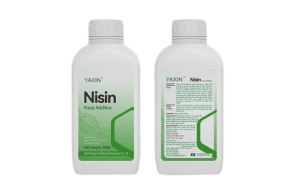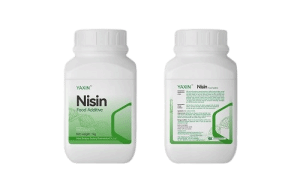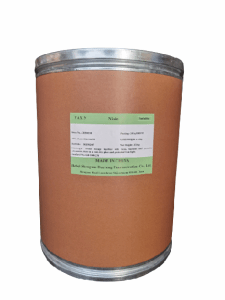
 CONTACT
CONTACT
- Linkman:Linda Yao
- Tel: +8618231198596
- Email:linda.yao@dcpharma.cn
- Linkman:CHARLES.WANG
- Department:Overseas
- Tel: 0086 0311-85537378 0086 0311-85539701
Natamycin use Methods and Precautions
TIME:2025-02-17Natamycin, as a food additive, must be used correctly to ensure optimal effectiveness and food safety. Below are the specific usage methods and precautions:
I. Usage Methods
1. Direct Addition Method
Dissolution: According to production requirements, natamycin should be fully dissolved in an appropriate amount of water or other solvents. Typically, it can be dissolved in warm water below 40°C with thorough stirring to ensure complete dissolution. Avoid using hot water, as it may affect natamycin’s activity.
Addition: The prepared natamycin solution should be added directly to raw materials or semi-finished food products at the appropriate stage of processing. For example, in dairy and beverage production, it can be added during the ingredient mixing phase; in baked goods, it can be added during dough preparation. Ensure even distribution to achieve uniform antimicrobial effects in the food.
2. Surface Treatment Method
Spraying: For foods with large surface areas, such as bread, pastries, and meat products, natamycin can be formulated into a solution of a specific concentration and evenly sprayed onto the food surface using spraying equipment. When spraying, control the pressure and distance to ensure uniform coverage, forming an effective antimicrobial protective layer.
Soaking: Food raw materials or finished products can be soaked in a natamycin solution for a certain period, allowing it to fully adhere to the food surface. For example, hams and soy products can be treated using this method. The soaking time and solution concentration should be adjusted based on the food type and processing requirements.
Coating: For irregularly shaped foods or those unsuitable for spraying or soaking, such as cheese, a brush or applicator can be used to evenly coat the food surface with the natamycin solution. Ensure complete coverage to avoid missed areas.
II. Precautions
1. Usage Scope and Limits
Regulatory Compliance: Follow national laws and food safety standards regarding the approved usage scope and limits of natamycin-lactose preparations. Different food categories have specific maximum allowable limits; for example, the permitted amount in cheese and pastries is usually 0.05 - 0.3 g/kg. Do not exceed the permitted range or dosage to prevent potential health risks.
Product Characteristics: Determine the appropriate dosage based on the nature of the food and its processing methods. For foods prone to microbial contamination, with high moisture content and rich nutrients, a slightly higher dosage may be necessary—but must not exceed the regulatory limit. Conversely, foods with inherent antimicrobial properties or stable storage conditions may require a reduced dosage.
2. Storage Conditions
Temperature and Humidity: Natamycin-lactose preparations should be stored in a cool, dry, and well-ventilated environment, away from direct sunlight. The recommended storage temperature is below 25°C, with relative humidity below 60%. High temperature and humidity may cause the product to absorb moisture and clump, affecting its stability and effectiveness.
Packaging Integrity: Ensure that product packaging remains intact during storage. Any unused portion should be promptly sealed to prevent exposure to air and moisture, which could lead to degradation. If packaging is damaged, use the product as soon as possible or transfer it to a sealed container for preservation.
3. Compatibility with Other Substances
Avoid Incompatible Combinations: When using natamycin-lactose preparations, consider their compatibility with other food additives and ingredients. Some substances, such as strong oxidants or reductants, may react with natamycin and reduce its antimicrobial activity. When using multiple additives together, consult relevant references or conduct compatibility tests to ensure no adverse interactions occur.
pH Sensitivity: Natamycin’s antimicrobial effect is strongly influenced by pH levels. It exhibits the highest activity within a pH range of 4 - 6. Therefore, the pH of the food should be considered when using natamycin. If the food has a higher or lower pH, adjusting the dosage or implementing additional measures may be necessary to ensure optimal antimicrobial effects.
4. Hygiene and Safety
Personnel Protection: During the use of natamycin, operators should wear appropriate protective gear such as gloves and masks to avoid direct skin contact and inhalation of dust, which may cause irritation. If accidental contact with skin or eyes occurs, rinse immediately with plenty of water and seek medical attention if necessary.
Cleaning and Disinfection: Equipment and containers used for natamycin should be kept clean and regularly disinfected to prevent microbial contamination and residual natamycin from affecting subsequent production. Additionally, natamycin should be stored separately from toxic or hazardous substances to prevent cross-contamination.
- Tel:+8618231198596
- Whatsapp:18231198596
- Chat With Skype







